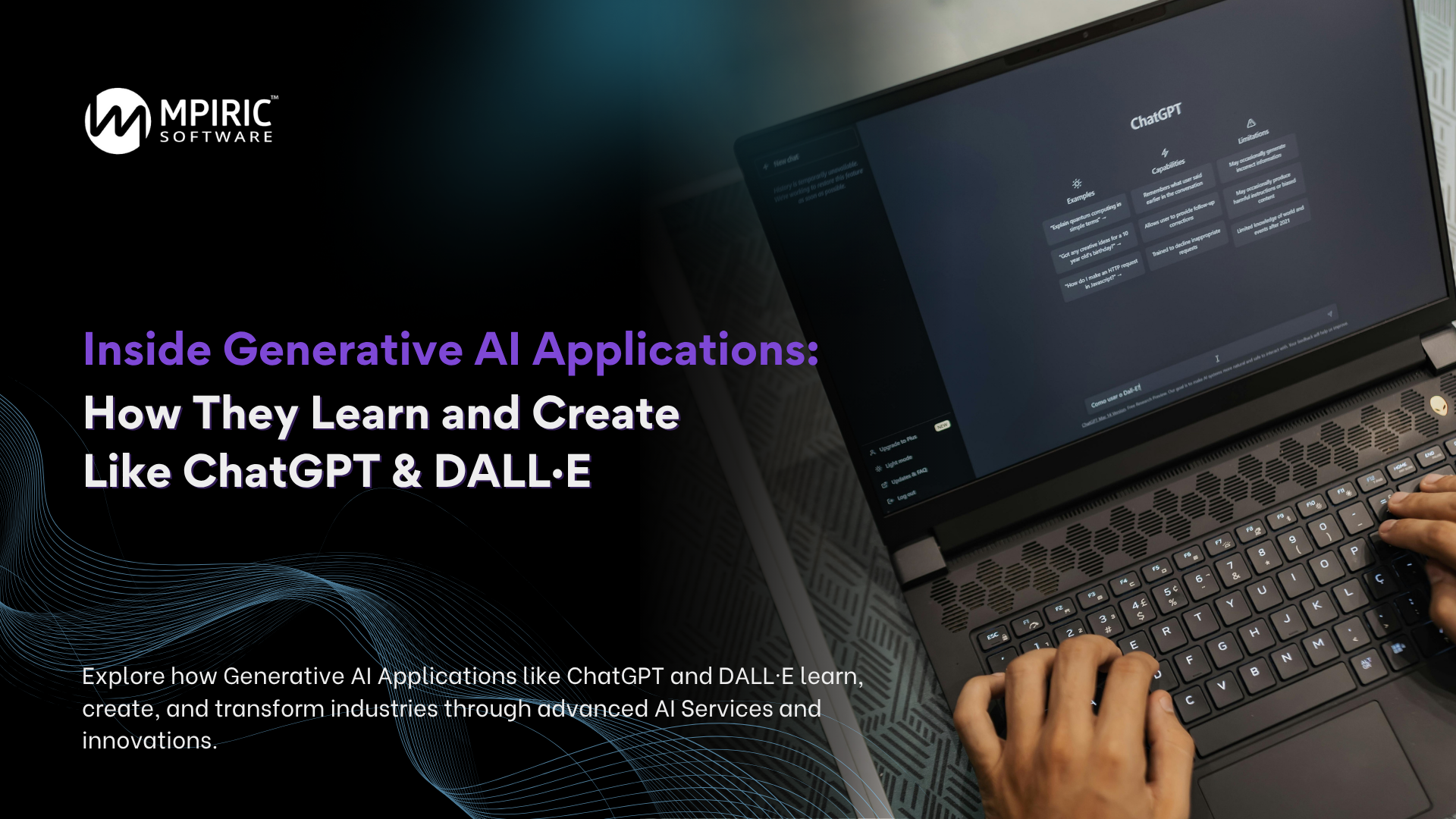Generative AI Application are reversing conventional creativity and technology notions. With word strings that are indistinguishable from human speech to creating beautiful images, they are doing things that are amazingly akin to the way humans think. But what is happening behind the scene? Let’s take a look and find out how such tools learn and create content in a manner similar to humans.
Understanding Generative AI Applications
In essence, generative AI tools are designed to create new information as a function of the data that exists. They do not just read through information; they use the information to create something entirely novel. Consider ChatGPT writing paragraphs or DALL·E generating a picture from a line such as “cat in space.” Those programs are built on sophisticated models known as neural networks that try to mimic the way our brains process patterns.
Generative models use deep learning and massive collections of data. The AI is trained to learn about language, art, sound, and more to find patterns that allow it to predict what’s next in a sequence, and then it creates sentences or life-like faces.
How Generative AI Applications Learn
Learning for Generative AI begins with gigantic datasets. These models are trained where they:
- Look at billions of examples, such as sentences, pictures, or videos.
- Learn statistical patterns between units of information.
- Make predictions about what should follow based on context.
For instance, it processes billions of conversations while training ChatGPT, learns grammar and tone, and tunes its responses with reinforcement learning-meaning, human feedback improves it.
Types of Generative AI Models
Generative Adversarial Networks (GANs)
One network generates data, and another criticizes it. They fight each other until the generated result is as good as actual data.
VAEs (Variational Autoencoders)
These models learn how to compress and reconstruct data, so they’re best for generating varied but comparable types of content.
Transformers
Transformers, the architecture that apps like ChatGPT and DALL·E utilize, are really exceling at working with sequences, thus being incredibly well-suited to language or image generation.
Generative AI Application Key Benefits
Here’s why businesses are investing so much money in generative AI applications:
- Improved Speed: They help generate designs, content, and code much faster.
- Affordable: save labor and time.
- Scalable Solutions: Trained models can handle massive workloads.
- Innovation Power: Open up new storytelling, advertising, and research possibilities.
Healthcare, media, and retail industries use AI for increased productivity and customer engagement based on these benefits.
Generative AI Applications in Real-World Examples
- ChatGPT: Creates natural-sounding dialogue; generates content for writing, coding, and even customer support.
- DALL·E: Turns text descriptions into unique, high-quality images.
- GitHub Copilot: Assists developers in writing cleaner and faster code.
- Jasper AI: Helps marketers write ad copies, blogs, and social media updates.
All these examples show how AI can create something new rather than just analyzing information.
Problems in Generative AI Applications
Although Generative AI Applications are phenomenal, they suffer from the following problems:
- Biases in Training Data: AI can have biases inherent in its training material.
- Copyright Issues: The information generated might unknowingly duplicate already copyrighted material.
- Data Protection: Using sensitive or confidential data poses privacy risks.
- Energy Consumption: Training large AI systems is a computationally expensive process.
Businesses using these technologies are answerable for providing transparency and ethical responsibility when using generative AI.
Things to Expect in the Future of Generative AI
Despite the challenges, opportunities for Generative AI Applications are endless. With ongoing innovation, business can create more personalized, optimized, and innovative workflows. AI-generated simulations, chat interactions, and data-driven insights will soon be impossible to avoid in almost every industry.
AI Services have also established themselves within this framework in the recent few years. They help companies integrate AI solutions into their day-to-day processes. The majority of firms now employ service providers that focus on incorporating personalized AI features into their systems or applications.
As we continue to move deeper into this AI age, initiating the transformation are companies like Mpiric Software. Master developers and integrators, they deliver practical AI solutions to other business competitors who seek an edge.
How Generative AI Is Changing the Way We Work
- Personalized Advertising: Companies use AI when they create personalized ads and campaigns.
- Smart Product Design: AI designers design prototypes, which are then produced.
- Customer Service Automation: Chatbots are now able to understand even complex requests.
- Content Creation: AI aids in the creation of SEO content, social media posts, and images.
These applications bring together creativity and functionality to make work faster and smarter.
Frequently Asked Questions About Generative AI Applications
1. What are Generative AI Applications used for?
Generative AI Applications produce new content, be it text, images, and even code. These systems allow for automated creative work for marketing, design, entertainment, and the like.
2. How do Generative AI models, like ChatGPT, learn?
They learn basically from large data sets by detecting patterns and training loops. The more diversified the data, the ‘smarter’ and accurate they become.
3. Are Generative AI Applications safe to use?
Yes, but that’s dependent on how responsibly they’re used. Ethical training data, monitoring, and well-defined boundaries make them safe.
4. Which industries make maximum use of Generative AI?
Healthcare, entertainment, education, and technology industries are the ones that make extensive use of AI for automation, creativity, and decision-making.
5. How do businesses implement AI in their systems?
It can be much easier with the support of expert AI partners like Mpiric Software. It offers AI Services to fit business objectives and existing systems.
Final Thoughts
Generative AI technologies are not just tools; they are turning out to be creative partners. They complement human skills in a combination of innovation and automation. Whether in art or business systems, AI helps people to dream, to create, and to execute quickly and wisely. With the technology evolving further, human-AI collaboration will be the next phase of productivity and creativity.


